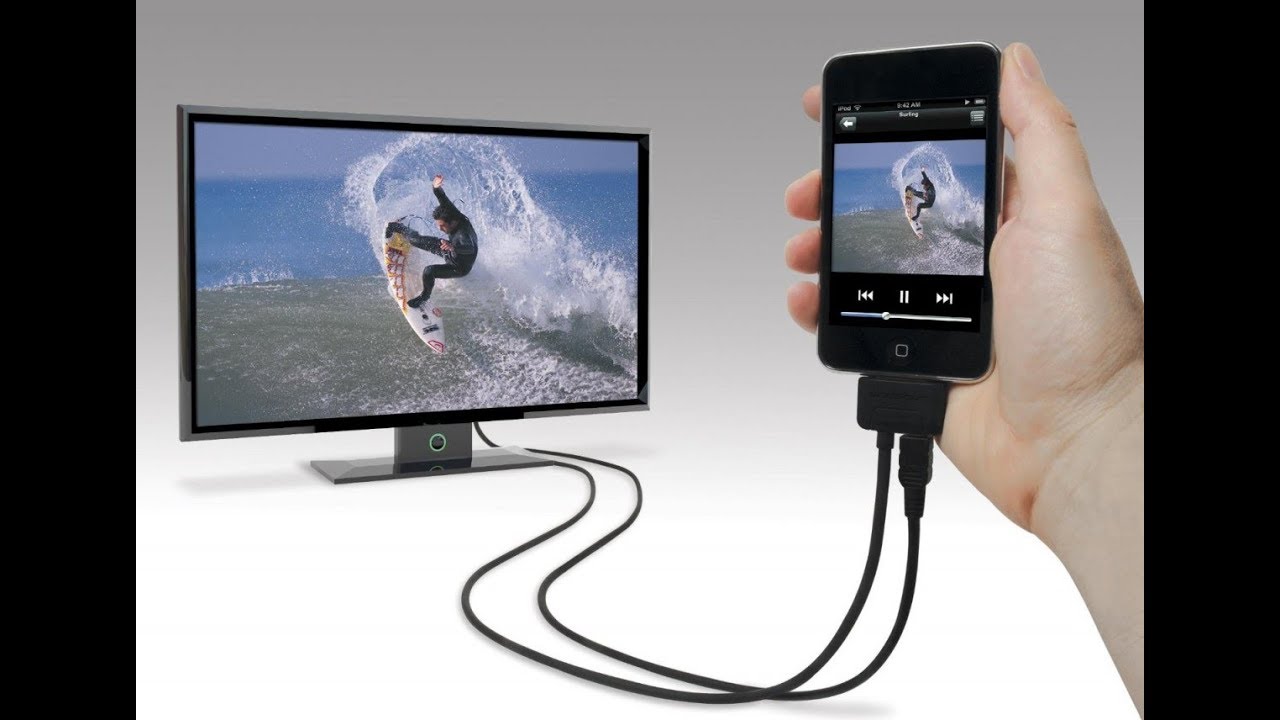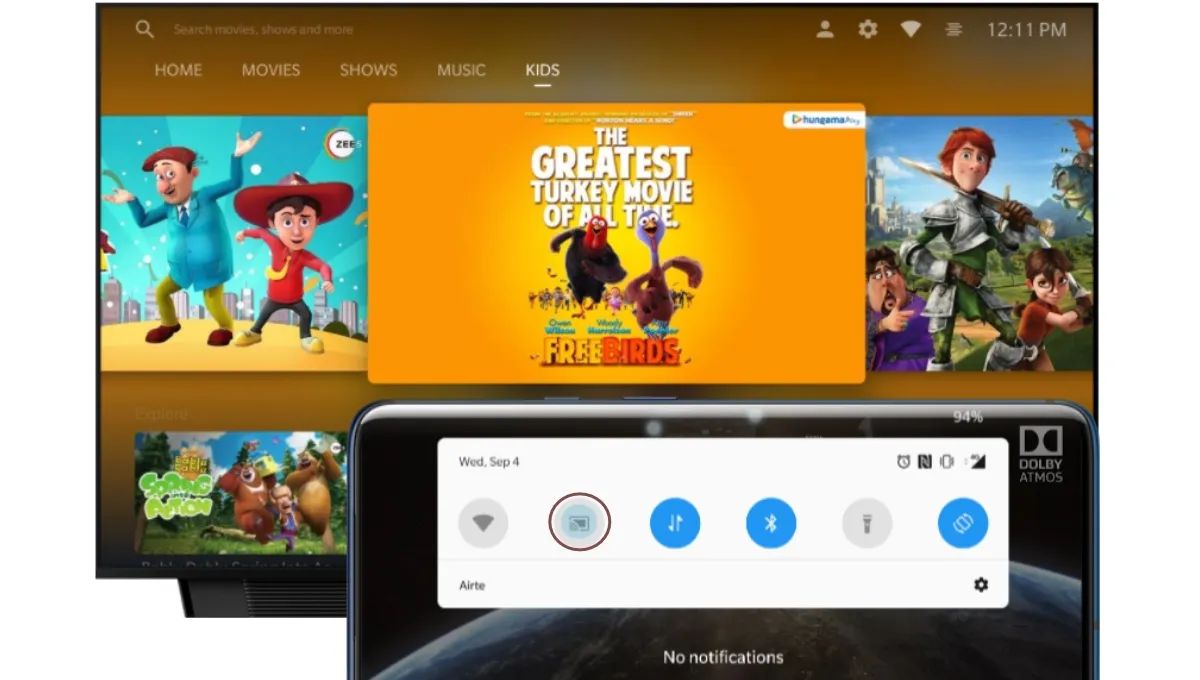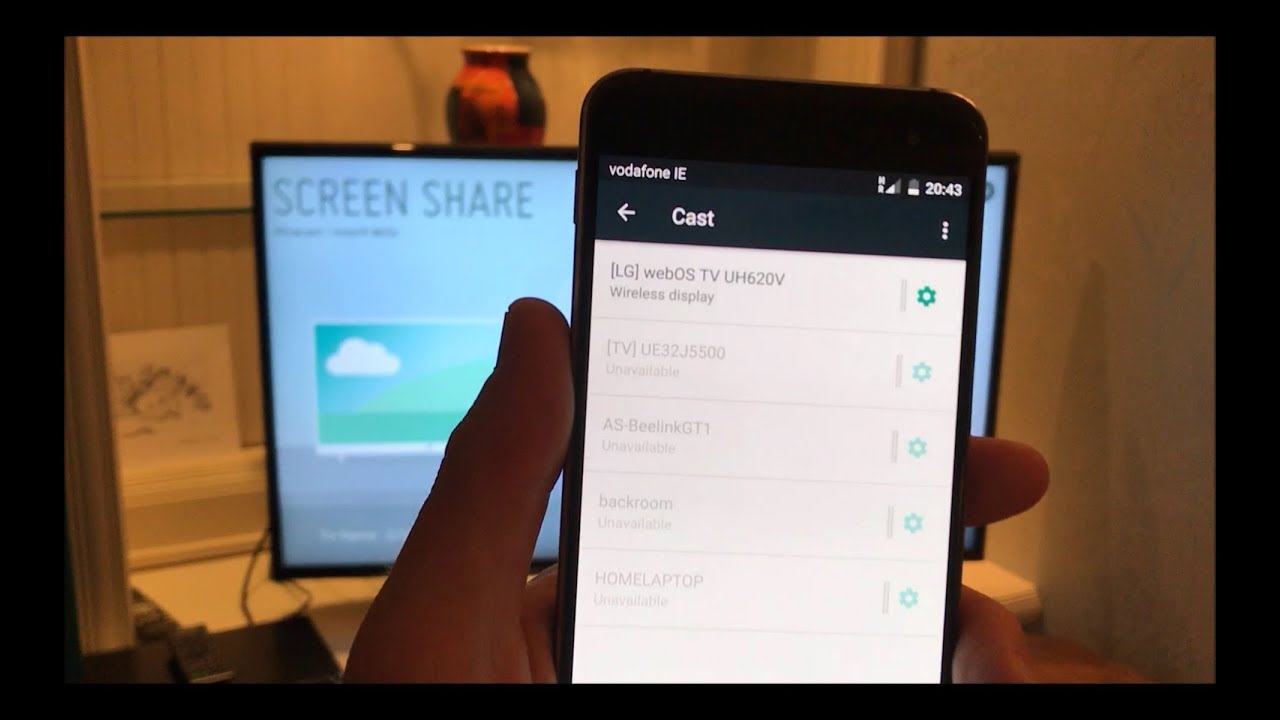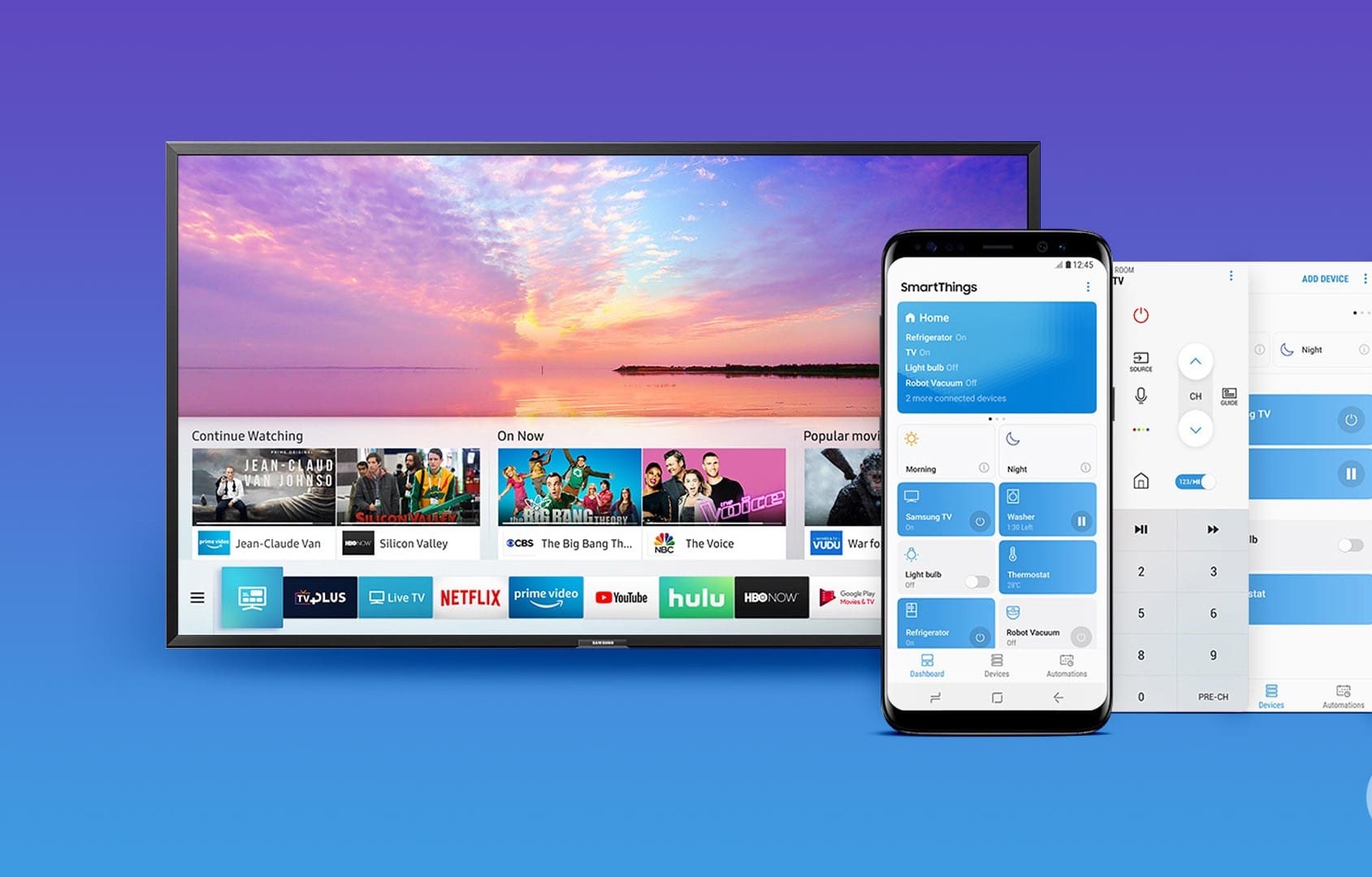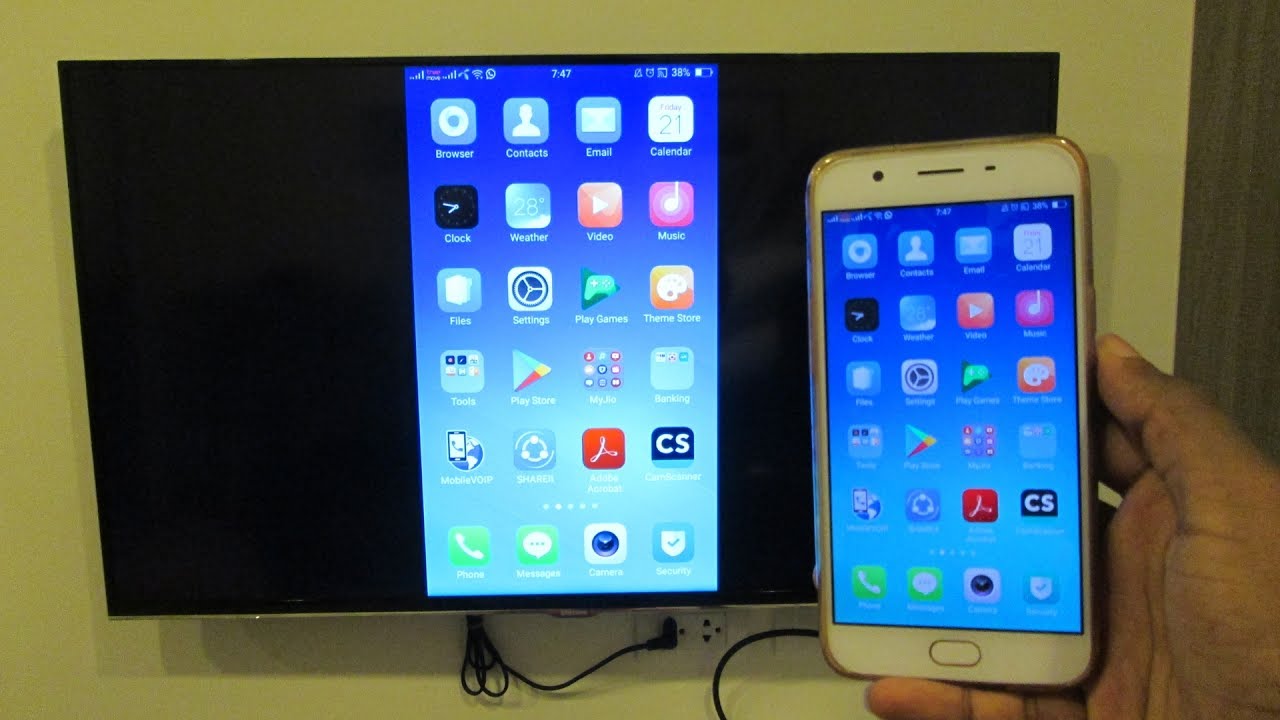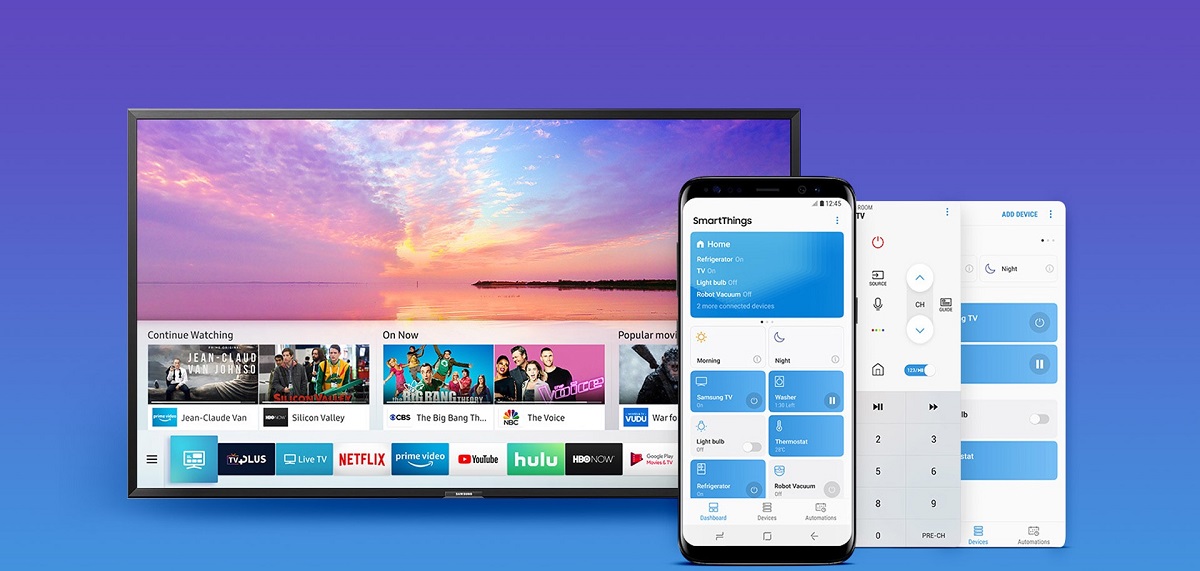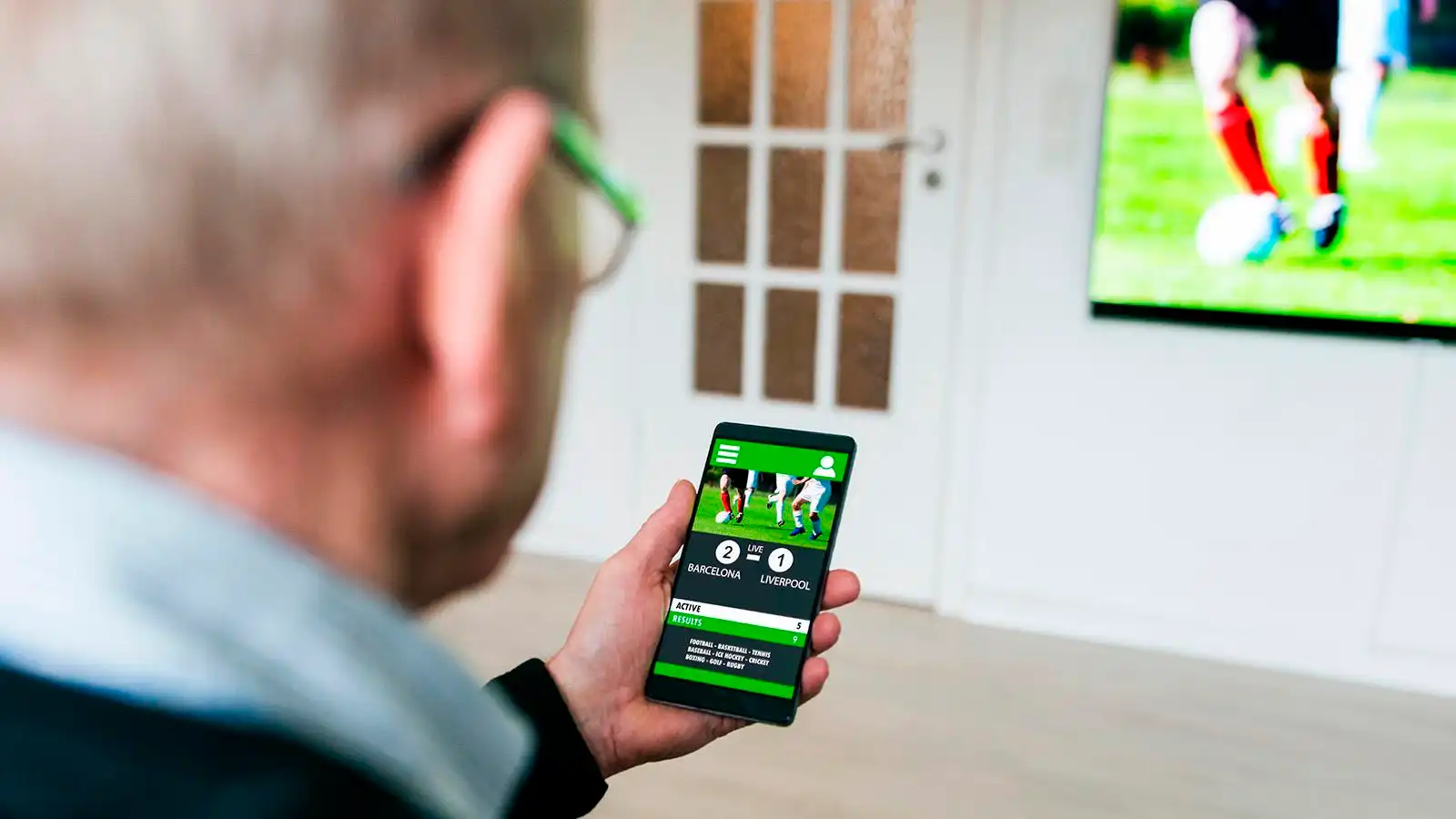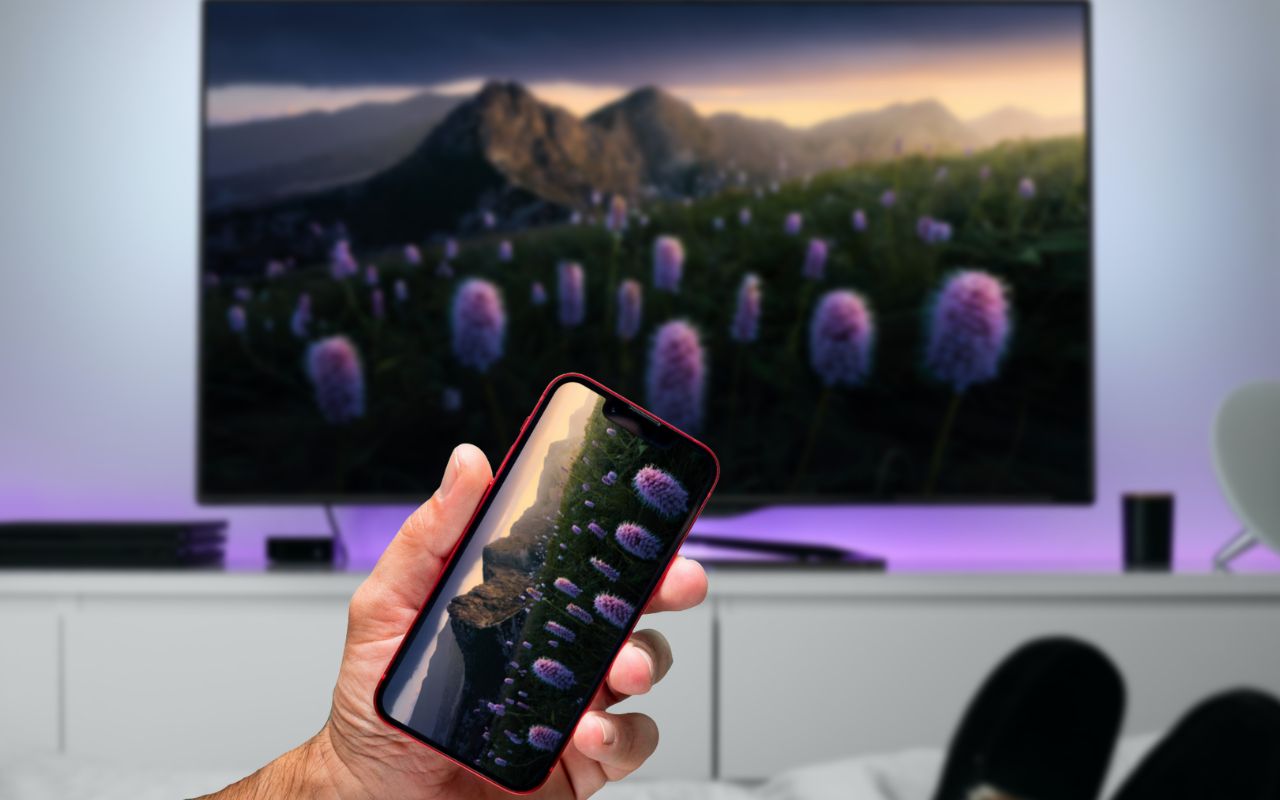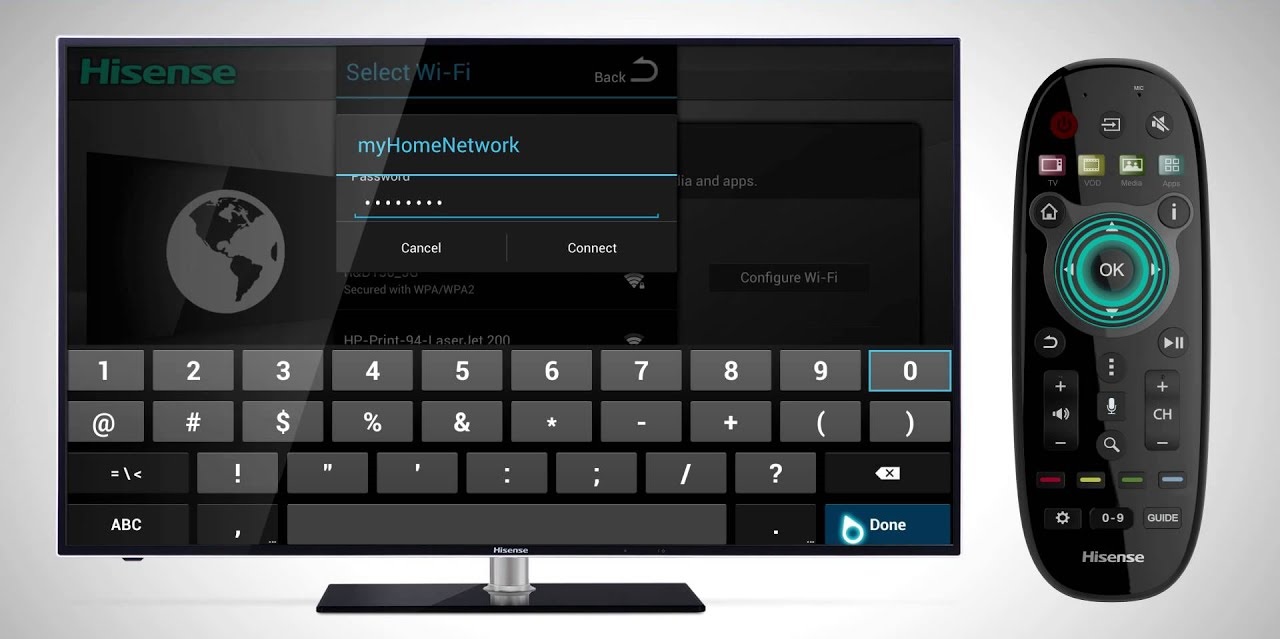Introduction
Connecting your phone to a smart TV opens up a world of possibilities for entertainment and convenience. Whether you want to stream your favorite movies and TV shows, share photos or videos with friends and family, or simply enjoy a larger screen for gaming, there are various ways to establish a connection between your phone and your smart TV.
In this article, we will explore different connection options and guide you through the process of connecting your phone to your smart TV. From using HDMI cables to wireless screen mirroring and smart TV apps, we’ll cover the most popular methods to help you find the one that works best for you.
Before we delve into the specifics, it’s important to note that the compatibility and available connection options may vary depending on the make and model of your smart TV and phone. It’s always a good idea to consult the user manuals or online resources provided by the manufacturers for detailed instructions specific to your devices.
Without further ado, let’s dive into the exciting world of connecting your phone to a smart TV!
Subtitle 1: Understanding the Connection Options
Before we begin connecting your phone to a smart TV, it’s important to have a clear understanding of the various connection options available. Depending on your devices and preferences, you can choose from the following methods:
1. HDMI Cable: This is the most common and straightforward method of connecting your phone to a smart TV. It involves using an HDMI cable to establish a direct wired connection between the two devices. This method offers high-quality audio and video transmission, making it perfect for streaming movies, playing games, or giving presentations.
2. Wi-Fi (Screen Mirroring): If you prefer a wireless connection, screen mirroring via Wi-Fi is an excellent option. This allows you to mirror the contents of your phone’s screen onto the smart TV in real-time. With screen mirroring, you can effortlessly stream videos, browse photos, or perform any other activities from your phone directly on the big screen.
3. Chromecast/Miracast: Chromecast (for Android devices) and Miracast (for Windows devices) are wireless screen mirroring technologies that eliminate the need for cables. Simply plug a Chromecast or use the built-in Miracast functionality, and you can stream content from your phone to the smart TV seamlessly.
4. Apple AirPlay: If you are an Apple user with an iPhone or iPad, you can take advantage of Apple AirPlay, a wireless streaming technology exclusive to Apple devices. With AirPlay, you can easily stream content from your iOS device to a compatible smart TV, allowing you to enjoy your favorite videos and photos on the big screen.
5. Smart TV Apps: Many modern smart TVs come equipped with built-in apps that allow you to access popular streaming services like Netflix, Hulu, and YouTube directly from the TV itself. By installing these apps and connecting your TV to the internet, you can enjoy a wide range of entertainment options without the need for additional devices.
Understanding these different connection options will help you choose the method that works best for your specific needs and devices. In the following sections, we will dive deeper into each connection method, providing step-by-step instructions on how to establish the connection between your phone and your smart TV.
Subtitle 2: Connecting via HDMI Cable
Connecting your phone to a smart TV using an HDMI cable is a reliable and straightforward method that offers high-quality audio and video transmission. Here’s how you can do it:
Step 1: Check the ports on your phone and smart TV. Most smartphones have a Micro-HDMI or USB-C port, while smart TVs usually have standard HDMI ports. Make sure you have the necessary cables and adapters to connect the two devices.
Step 2: Connect one end of the HDMI cable to the HDMI port on your smart TV. It’s typically located at the back or side of the TV and labeled as “HDMI”.
Step 3: Connect the other end of the HDMI cable to the HDMI port on your phone or use an adapter if required. Make sure the connection is secure.
Step 4: Turn on your smart TV and select the HDMI input that corresponds to the port you connected your phone to. This can usually be done by pressing the “Input” or “Source” button on your TV’s remote control.
Step 5: On your phone, go to the settings and navigate to the “Display” or “Connectivity” section. Look for the option to “Enable HDMI” or “Mirror Display”. Enable this option to activate the connection between your phone and the smart TV.
Your phone’s screen should now be mirrored onto your smart TV. You can now enjoy watching videos, browsing photos, or playing mobile games on the larger screen. Please note that some devices may require additional settings or adjustments to ensure a proper connection. Refer to your phone’s user manual or consult the manufacturer’s support documentation if you encounter any issues.
Connecting your phone to a smart TV via an HDMI cable is a reliable and hassle-free method. However, it does require a physical connection and limits your mobility as you need to be within the cable’s reach. If a wireless connection is more convenient for you, consider exploring the next method of connecting via Wi-Fi and screen mirroring.
Subtitle 3: Connecting via Wi-Fi (Screen Mirroring)
Connecting your phone to a smart TV via Wi-Fi and screen mirroring offers a wireless and convenient way to enjoy your phone’s content on a larger screen. Follow these steps to establish the connection:
Step 1: Ensure that your smart TV supports screen mirroring. Most modern smart TVs have this feature, but it may be named differently depending on the brand and model. Look for terms like “Screen Mirroring,” “Cast,” or “Miracast” in the TV’s settings menu.
Step 2: On your phone, go to the “Settings” menu and navigate to the “Display” or “Connectivity” section. Look for the option to “Enable Screen Mirroring” or “Cast Screen.” Tap on this option to activate screen mirroring on your phone.
Step 3: On your smart TV, open the screen mirroring or casting function. This may vary depending on your TV’s brand, but it is typically found under the “Network” or “Connections” settings.
Step 4: Your smart TV will search for available devices to connect to. When your phone’s name appears on the TV screen, select it to establish the connection.
Step 5: Once the connection is established, your phone’s screen will be mirrored on the smart TV. You can now navigate through your phone’s apps, photos, videos, and games directly on the big screen.
Please note that for certain Android devices, the screen mirroring function may be labeled as “Smart View” or “Quick Connect.” If you experience any difficulties, check your phone’s user manual or contact the manufacturer’s support for specific instructions based on your device.
With the Wi-Fi and screen mirroring connection, you can enjoy the flexibility of controlling your phone’s content from a distance, without the need for any cables. It’s an excellent option for streaming videos, giving presentations, or sharing photos with friends and family on a larger display. However, keep in mind that screen mirroring functionality and performance may vary depending on the capabilities of your phone and smart TV.
Subtitle 4: Connecting via Chromecast/Miracast
If you prefer a wireless connection without the need for cables, using Chromecast or Miracast is an excellent option for connecting your phone to a smart TV. Both technologies allow you to stream content from your phone to the TV effortlessly. Here’s how to set it up:
Step 1: Check if your phone and smart TV have built-in support for Chromecast or Miracast. Some Android devices come with built-in Chromecast functionality, while Windows devices typically support Miracast. If your devices don’t have these features, you can purchase a Chromecast dongle or a Miracast adapter to connect to your TV.
Step 2: Plug in the Chromecast dongle or connect the Miracast adapter to an available HDMI port on your smart TV. Make sure to power it up as well.
Step 3: On your TV, switch to the corresponding HDMI input where the Chromecast dongle or Miracast adapter is connected.
Step 4: Download and install the Chromecast app from the Google Play Store if you have an Android device. For Windows devices, you may need to access the “Devices” or “Project” settings to enable Miracast.
Step 5: Open the Chromecast app on your phone or navigate to the Miracast settings on your Windows device. Follow the instructions to connect to your Chromecast or Miracast device.
Step 6: Once connected, you can start streaming content from your phone to the smart TV. This includes videos, photos, music, and even certain apps that support Chromecast or Miracast functionality.
Chromecast and Miracast offer wireless streaming capabilities, allowing you to enjoy your favorite content on the big screen without the hassle of cables. However, it’s worth noting that the performance and compatibility may vary depending on your device’s capabilities and the apps you’re using for streaming.
With this wireless connection option, you can easily stream online videos, play games, and view photos or presentations seamlessly on your smart TV. Simply cast your phone’s screen to the TV and enjoy the enhanced viewing experience.
Subtitle 5: Connecting via Apple AirPlay
If you have an iPhone or iPad, connecting to a smart TV through Apple AirPlay provides a seamless wireless streaming experience. With AirPlay, you can easily display your device’s screen on the TV and enjoy various multimedia content. Here’s how to set it up:
Step 1: Ensure that your smart TV supports AirPlay. Many newer smart TVs are compatible with AirPlay, but it’s essential to verify this feature in your TV’s specifications or user manual.
Step 2: Connect your iPhone or iPad and your smart TV to the same Wi-Fi network. This is crucial for AirPlay to work correctly.
Step 3: On your iPhone or iPad, access the Control Center by swiping down from the top-right corner (for iPhone X and later) or swiping up from the bottom (for older iPhone models). Or, on iPad, swipe down from the top-right corner of the screen.
Step 4: In the Control Center, tap on the Screen Mirroring or AirPlay option. A list of available AirPlay-enabled devices will appear.
Step 5: Select your smart TV from the list of available devices. If prompted, enter the AirPlay passcode provided by your TV.
Step 6: Once connected, your iPhone or iPad’s screen will be mirrored on the smart TV. You can now stream videos, show photos, and play music directly from your device to the TV.
It’s important to note that not all apps support AirPlay. However, many popular streaming services, such as Netflix, YouTube, and Apple Music, have native AirPlay integration, allowing you to stream content directly from the app to your smart TV.
Connecting via Apple AirPlay provides a convenient and wireless method to enjoy your iPhone or iPad’s content on a larger screen. Whether you want to share photos with friends and family, watch videos, or give a presentation, AirPlay simplifies the process and expands your viewing experience.
Subtitle 6: Connecting via Smart TV Apps
Many modern smart TVs come equipped with built-in apps that provide direct access to popular streaming services and online content. Connecting your phone to a smart TV via these apps allows you to enjoy a wide range of entertainment options without the need for additional devices. Here’s how to make the most of smart TV apps:
Step 1: Ensure that your smart TV is connected to the internet. Most smart TVs have built-in Wi-Fi capabilities or an Ethernet port for a wired connection. Follow your TV’s instructions to connect it to your home network.
Step 2: On your smart TV’s user interface, navigate to the app store or app section. This may be labeled as “Smart Hub,” “Apps,” or have the icon of a shopping bag.
Step 3: Browse through the available apps and find the ones you’d like to use. Popular streaming services like Netflix, Hulu, Amazon Prime Video, and YouTube are commonly available on smart TVs. Select and install the apps to your TV.
Step 4: Open the app on your smart TV and follow the on-screen prompts to log in to your account or create a new one. Depending on the app, you may need to activate it by entering an activation code on your phone or computer.
Step 5: On your phone, open the corresponding app for the service you want to use. Ensure that your phone is connected to the same Wi-Fi network as your smart TV.
Step 6: Locate the “Cast” or “AirPlay” icon within the app. Tap on it, and a list of available devices will appear.
Step 7: Select your smart TV from the list of devices to establish the connection. The content you selected on your phone will now start playing on the smart TV.
Connecting via smart TV apps allows you to easily access a range of streaming services, TV shows, movies, and more directly from your smart TV’s interface. It eliminates the need to switch between different devices or rely on additional cables.
Keep in mind that the availability of apps may vary depending on your smart TV’s brand and model. Additionally, some apps may require a subscription or a separate account to access their content. Enjoy exploring the vast library of entertainment options that smart TV apps have to offer!
Subtitle 7: Troubleshooting Common Connection Issues
While connecting your phone to a smart TV is generally a straightforward process, you may encounter some common issues along the way. Here are some troubleshooting steps to help you overcome these connection problems:
1. Ensure Wi-Fi Connectivity: Make sure both your phone and smart TV are connected to the same Wi-Fi network. Inconsistent Wi-Fi signals or devices on different networks can disrupt the connection. Consider restarting your router or moving closer to the Wi-Fi source if necessary.
2. Check Device Compatibility: Ensure that both your phone and smart TV are compatible with the connection method you are using. For example, if you’re using Chromecast, ensure that your phone supports Chromecast functionality. Refer to the device manuals or manufacturer’s websites for compatibility information.
3. Update Firmware and Apps: Keep your smart TV and phone firmware up to date, as well as the relevant apps you’re using for the connection. Keeping your devices up to date ensures compatibility and improves performance.
4. Restart Devices: Sometimes, simply restarting your phone, smart TV, and any other devices involved can resolve connection issues. Turn off the devices, unplug them from the power source, wait for a few moments, and then plug them back in and turn them on again.
5. Disable VPN or Proxy: If you’re using a VPN or proxy service on your phone or smart TV, try disabling it temporarily, as it may interfere with the connection process. Once the devices are connected, you can re-enable the VPN or proxy service.
6. Check HDMI and Cable Connections: If you’re connecting via HDMI cable, ensure that the cable is securely plugged into both your phone and smart TV. Inspect the cable for any visible damage or try using a different HDMI cable to rule out any cable-related issues.
7. Reset Network Settings: If none of the above solutions work, you can try resetting the network settings on your phone and smart TV. This will clear any previous network configurations and allow you to set up the connection again from scratch.
If you’re still experiencing difficulties in connecting your phone to a smart TV or if the connection drops frequently, consult the user manuals or contact the respective device’s customer support for further assistance. They can provide specific troubleshooting steps based on your phone and TV models.
By following these troubleshooting steps, you can overcome common connection issues and ensure a smooth and uninterrupted connection between your phone and smart TV.
Conclusion
Connecting your phone to a smart TV opens up a world of entertainment and convenience. Whether you want to stream movies, share photos with friends and family, or enjoy gaming on a larger screen, there are various connection options available to suit your needs.
In this article, we explored different connection methods, including HDMI cables, Wi-Fi screen mirroring, Chromecast/Miracast, Apple AirPlay, and smart TV apps. Each method has its advantages and considerations, such as the need for cables, compatibility with devices, or the availability of specific apps. By understanding these options, you can choose the best way to connect your phone to your smart TV based on your preferences and device capabilities.
It’s important to keep in mind that compatibility and available connection options may vary depending on the make and model of your phone and smart TV. Consult the user manuals or online resources provided by the manufacturers for specific instructions and troubleshooting guidance.
With a successful phone-to-smart TV connection, you can enhance your entertainment experience, share memorable moments with loved ones, and enjoy the convenience of a larger screen. Whether you choose to connect via cables, wireless technologies, or through smart TV apps, the possibilities are endless.
Now it’s time to explore the possibilities and enjoy a whole new level of entertainment on your smart TV!







